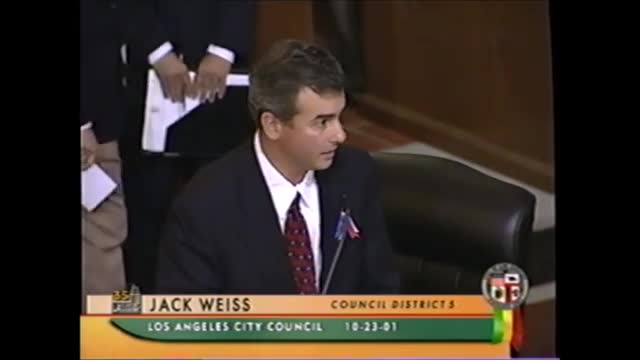Los Angeles honors Mayor Tom Bradley by naming City Hall tower after him
April 19, 2025 | Los Angeles City, Los Angeles County, California
Thanks to Scribe from Workplace AI and Family Portal , all articles about California are free for you to enjoy throughout 2025!

This article was created by AI using a video recording of the meeting. It summarizes the key points discussed, but for full details and context, please refer to the video of the full meeting. Link to Full Meeting
The meeting commenced with procedural updates, including a call for the next item on the agenda, which was item number 40. This item involved a public hearing regarding the naming of the 27th floor of City Hall as the Tom Bradley Tower. Council member Holden introduced the motion, emphasizing Bradley's substantial contributions to the city, including his tenure as the longest-serving mayor of Los Angeles. The council unanimously approved the motion, and a ceremony is scheduled for the following Friday at 9 AM, where family members and friends of Bradley will be present.

Before you scroll further...
Get access to the words and decisions of your elected officials for free!
Subscribe for FreeCouncil member Holden highlighted Bradley's journey from his early life in Texas to his impactful career in law enforcement and politics, noting that he served 52 years in various capacities, including as a police officer and elected official. The council's decision to honor Bradley aims to ensure that future visitors to City Hall will remember his legacy.
Following the discussion on Tom Bradley, the council moved to item number 1, called special by council member Reyes. This item addressed a business tax reform proposal with an estimated cost of approximately $4 million. Council member Weiss noted a difference of opinion between the Chief Administrative Officer (CAO) and the Chief Legislative Analyst (CLA) regarding the handling of this proposal, indicating ongoing discussions about the financial implications of the reform.
The meeting concluded with the council's approval of the motion to honor Tom Bradley, reflecting a commitment to recognizing significant historical figures in the city's governance. Further discussions on the business tax reform are expected as the council continues to navigate budgetary considerations.
Converted from Regular City Council - 10/23/01 meeting on April 19, 2025
Link to Full Meeting
Comments
View full meeting
This article is based on a recent meeting—watch the full video and explore the complete transcript for deeper insights into the discussion.
View full meeting




